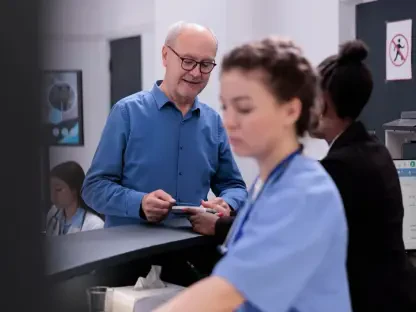I’m thrilled to sit down with Faisal Zain, a renowned expert in healthcare with a deep focus on medical technology. With years of experience in the development and manufacturing of medical devices for diagnostics and treatment, Faisal has been at the forefront of innovation in the industry. Today, we’re diving into the world of home-based healthcare and palliative care, exploring how these services are transforming patient outcomes, the challenges of integration, and the future of care delivery. Our conversation touches on the profound benefits of palliative care in home settings, the importance of partnerships and referrals, the unique needs of rural communities, chronic condition management, and the barriers that still stand in the way of broader adoption.
How has integrating palliative care into home-based services impacted the quality of care for patients?
Integrating palliative care into home-based services has been a game-changer. It’s not just about managing illness; it’s about enhancing the overall well-being of patients. We’ve seen significant improvements in symptom control, which directly boosts comfort levels. Beyond that, it fosters a deeper connection with patients and their families through education and support, leading to higher satisfaction. It’s a holistic approach that addresses physical, emotional, and even social needs right in the patient’s home.
What role does palliative care play in supporting caregivers in a home health environment?
Caregivers often bear a tremendous burden, and palliative care steps in as a vital lifeline. It provides them with education on managing symptoms and understanding the patient’s condition, which reduces stress and builds confidence. We also offer emotional support, helping caregivers cope with the challenges of their role. This support translates into better care for the patient because a supported caregiver can focus on delivering compassionate, attentive care without feeling overwhelmed.
Can you elaborate on how palliative care helps bridge healthcare gaps for patients in rural areas?
Absolutely. Rural patients often struggle with access to primary care or specialists due to distance, mobility issues, or limited local resources. Palliative care acts as a bridge by bringing specialized support directly to their homes. It ensures better coordination between the patient, their primary care doctor, and any specialists involved. By facilitating communication and real-time updates from the home, we can address issues promptly, reducing the need for long, difficult trips to medical facilities.
Why do you think palliative care is particularly effective for managing chronic conditions at home?
Chronic conditions like diabetes, heart disease, or COPD are complex and often come with overlapping challenges. Palliative care excels here because it focuses on coordinated, comprehensive management. It’s not just about treating one issue—it’s about looking at the whole picture, ensuring the right medications, monitoring symptoms, and preventing unnecessary hospital visits. This tailored approach helps stabilize patients and improves their quality of life significantly while staying in their familiar environment.
What are some of the biggest hurdles preventing more home-based care providers from adopting palliative care services?
One of the primary hurdles is the reimbursement structure. Current payment models often don’t fully cover the interdisciplinary services that palliative care requires, making it financially challenging for providers to sustain these programs. Additionally, regulatory complexities and the need for better electronic medical record systems to document and track outcomes create barriers. There’s also a gap in education—many providers and stakeholders aren’t fully aware of the value palliative care brings, which slows adoption.
How important are partnerships and bi-directional referrals in expanding palliative care within home health services?
Partnerships and bi-directional referrals are critical. They create a seamless flow of information and resources between home health providers and palliative care teams, ensuring patients get the right care at the right time. These collaborations help identify needs early and prevent gaps in service. However, setting them up requires navigating strict compliance and regulatory rules around patient information, which can be slow and cumbersome. Once established, though, these systems are incredibly effective in enhancing care delivery.
What changes or reforms do you believe are most urgent to encourage wider adoption of palliative care in home settings?
Reimbursement reform is at the top of the list. We need payment models that recognize the full scope of palliative care services, including the work of interdisciplinary teams. Regulatory reform is also essential to simplify compliance and encourage innovation in care delivery. On the technology front, enhancing electronic medical records to better document goals of care and symptom management would make a huge difference. Lastly, standardized outcomes and education for all stakeholders would help build a stronger case for palliative care’s value.
What is your forecast for the future of palliative care in home-based healthcare?
I’m optimistic about the future of palliative care in home-based settings. As awareness grows and reforms take shape, I believe we’ll see a significant uptick in adoption over the next decade. Technology will play a big role—improved telehealth and medical devices will make remote monitoring and symptom management even more effective. I also foresee stronger policy support, with updated reimbursement models that incentivize providers to integrate palliative care. Ultimately, this will lead to a more compassionate, patient-centered approach to healthcare right where people feel most comfortable—at home.









